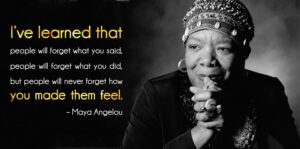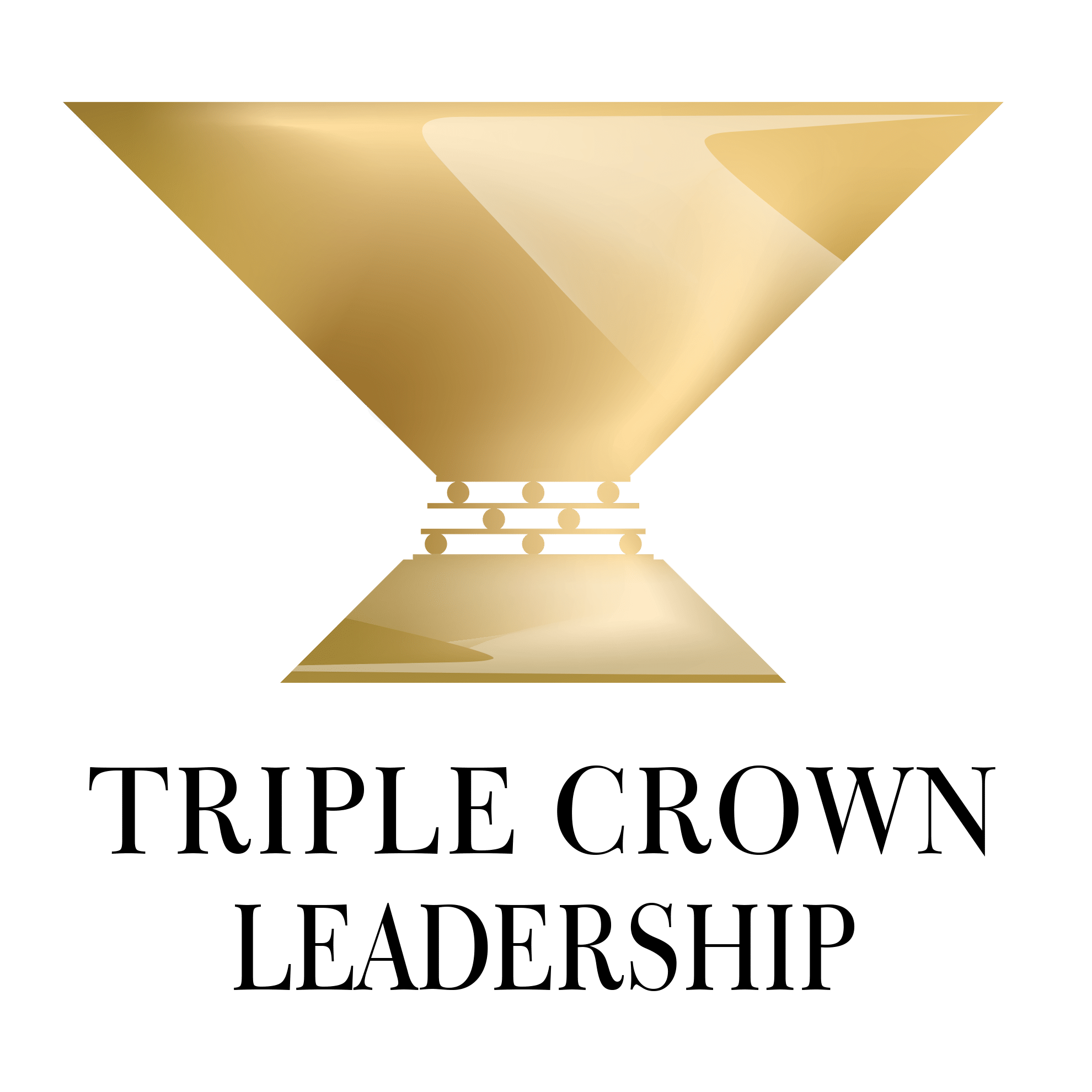You’re in a meeting with your boss and colleagues discussing an important issue. You have a new insight to share on how to solve the issue, so you speak up.
How would you feel if everybody ignores what you said and just moves on in the conversation?
Or if the next person to speak says, “That’s interesting, but…” and then contradicts or dismisses your point.
Think of this scenario: Everyone expresses their thoughts during the meeting while the boss remains silent. At the end of the meeting, the boss announces her decision or directives without acknowledging anything they’ve contributed.
Ignoring what people have said undermines leadership. So does dissing it.
In her book, Fierce Conversations, Susan Scott notes that everything we say creates what she calls an “emotional wake.” Often, we’re not aware of it. We’re wise to try to pay attention to it, check in often with people to ask them how our comments are landing, make sure our intent is good, and accept full responsibility for our communications and the relationships they impact.

“I’ve learned that people will forget what you said, people will forget what you did,
but people will never forget how you made them feel.”
-Maya Angelou
Acknowledge the Previous Speaker(s)
Constructively acknowledging what others have expressed, even if you disagree, is a powerful communication skill. When you’re in a meeting and you wish to share a thought, consider what others have said, especially the person talking right before you, and acknowledge their contribution. Then use “and” to transition to your new point. For example:
- “Jonas and Marianne made good points about X and Y, and I want to build on what they’ve said,” or
- “Claudia shared valuable thoughts about X, and now I’d like to take the discussion in a slightly different direction.”
If you disagree with someone, you can still acknowledge their point of view (and perhaps its potential benefits or value) before expressing your own. For example:
- “Alicia made an interesting suggestion that warrants consideration, and I want to add another point of view to the mix.”
“When you acknowledge something or someone,
it is a high form of respect.”
-Stanley R. Saunders, author
Be sure to use active listening (and/or reflective or empathic listening) while others are talking. Stephen R. Covey called it “listening to understand”—versus just waiting for your turn to speak.
This practice of listening well and acknowledging previous points sounds easier than it is, because it can involve several communication skills, such as giving undivided attention, not interrupting, maintaining an open mind, showing care for people’s feelings, offering appreciation and encouragement, praising when appropriate, and more.
“When you demonstrate convincingly that you care about the people around you, they’ll care about you. If you’re listening to them, they’ll want to listen to you. It’s a matter of mutual respect. As you connect with your team members, team cohesion will grow stronger. As a consequence, you’ll have more influence.”
-Dennis Coates and Meredith Bell, Connect with Your Team: Mastering the Top 10 Communication Skills

Leadership Derailers Assessment
Take this assessment to identify what’s inhibiting your leadership effectiveness. It will help you develop self-awareness and identify ways to improve your leadership.
“And” Versus “But”
“But” is a conjunction that contradicts what comes before it. It can sound aggressive or imply that you’re more knowledgeable and want to win the discussion.
“And” is a conjunction indicating two statements or points of view can be valuable, true, or at least considered at the same time. Using “and” more often can help build empathy and trust. It helps people share opinions openly and freely without feeling dismissed, and that can dramatically upgrade the quality of the conversation.
Of course, there’s a time and place for using “but” (example: if you clearly need to challenge something). It puts a harsher tone on the discussion, so use it sparingly.
Acknowledging what others have said and using “and” much more often than “but” helps recognize and builds bridges to the viewpoints of others. It can also help:
- avoid defensiveness
- build collaboration and teamwork
- make your leadership more inclusive
- develop more trust and rapport
- build “psychological safety” in your team
These approaches are examples of social intelligence in action. According to Daniel Goleman in Social Intelligence: Beyond IQ, Beyond Emotional Intelligence, social intelligence includes several factors in the domain of social awareness:
- Primal empathy: feeling with others; sensing nonverbal, emotional signals
- Attunement: listening with full receptivity
- Empathic accuracy: understanding someone’s thoughts, feelings, and intentions
- Social cognition: knowing how the social world works
It also includes factors in the domain of social facility, including influence and showing care and concern.
“The research tells us that cognitive intelligence—IQ—is simply baseline…. Competencies related to emotional and social intelligence—not IQ, college degrees, or technical experience—are the single and most important factors in distinguishing great leadership from average leadership.”
-Annie McKee, Richard Boyatzis, and Frances Johnston, Becoming a Resonant Leader

Personal Values Exercise
Complete this exercise to identify your personal values. It will help you develop self-awareness, including clarity about what’s most important to you in life and work, and serve as a safe harbor for you to return to when things are tough.
Important Caveats and Exceptions
While using “and” more than “but” to bridge to new points can be a helpful guideline, leaders are wise not to take it as a hard-and-fast rule or to take it too far. It can come across as insincere and manipulative if done too much or improperly. Simply adding the word “and,” for instance, won’t eliminate disagreements or disguise disdain.
Also, great leaders understand the value of candor and conflict in meetings and teams—the kind of conflict that’s constructive and in search of deeper or clearer truth, a better way, or a creative alternative. Author Patrick Lencioni rightly advises leaders to “mine for conflict,” because conflict can lead to important insights or important breakthroughs. (And sometimes leaders must resolve conflicts creatively.)
Leadership author Susan Scott notes the importance of “fierce conversations” in excellent teams. She advises against using “too many pillows” in conversations because it can muffle the message. In her book, Fierce Conversations, she notes, “…while we often tell ourselves we are softening the message so as not to hurt someone else’s feelings, we are really trying to protect ourselves.”

This business of acknowledging what others have said and judging when to use “and” versus “but” or other bridge words falls into the realm of what we call “steel and velvet,” the hard and soft edges of leadership in our “triple crown leadership” framework. Using “and” is an example of velvet leadership that pays attention to listening well, showing support and rapport, and building trust. But sometimes we need to flex to the steel side of leadership with some sharper distinctions or disagreements—especially when something important (like the purpose, values, or vision) is in jeopardy.
Clearly, doing this well requires good judgment and openness to feedback. But these simple practices can make a big difference to our leadership effectiveness.
“The art of communication is the language of leadership.”
-James Humes, author and presidential speechwriter
Reflection Questions
- Are you using “but” too often in your conversations—and not enough “and”?
- How often are you actively seeking feedback on the “emotional wake” of your communication?
- Are you acknowledging what other speakers have said before speaking?
- Will you start acknowledging others and use “and” more often to bridge to your points?
Tools for You
- Leadership Derailers Assessment to help you identify what’s inhibiting your leadership effectiveness
- Personal Values Exercise to help you determine and clarify what’s most important to you
- Alignment Scorecard to help you assess your organization’s level of alignment

Alignment Scorecard
When organizations aren’t aligned, it can reduce performance dramatically and cause frustration and dysfunction. With this Alignment Scorecard, you can assess your organization’s level of alignment and make plans for improving it.
Related Articles
- “How Great Leaders Reward, Recognize, and Celebrate People”
- “The Importance of Heart in Leadership”
- “Steel and Velvet Leadership”
“If you want people to do their best work,
you need to build relationships through effective communication.”
-Dennis Coates and Meredith Bell, Connect with Your Team: Mastering the Top 10 Communication Skills
Postscript: Quotations on Acknowledgement and Recognition
- “Acknowledge what the other person says. If what you hear are complaints, criticisms, and negative interpretations of events, don’t interrupt, defend, agree, or disagree. Just listen. Acknowledge what they’ve said and how they feel.” -Gill Hasson, author, How to Deal with Difficult People
- “Communication is your ticket to success if you pay attention and learn to do it effectively.” -Theo Gold, author
- “Communication works for those who work at it.” -John Powell, film composer
- “Communication is one of the most important skills you require for a successful life.” -Catherine Pulsifer, author
- “Communication is a skill that you can learn. It’s like riding a bicycle or typing. If you’re willing to work at it, you can rapidly improve the quality of every part of your life.” -Brian Tracy, author
- “Most people do not listen with the intent to understand; they listen with the intent to speak.” -Stephen R. Covey, author
- “Leaders don’t look for recognition from others, leaders look for others to recognize.” -Simon Sinek, author
- “No one who achieves success does so without acknowledging the help of others.” -Alfred North Whitehead, mathematician and philosopher
- “There is as much greatness of mind in acknowledging a good turn, as in doing it.” -Lucius Annaeus Seneca, Roman philosopher
- “None of us got to where we are alone. Whether the assistance we received was obvious or subtle, acknowledging someone’s help is a big part of… saying thank you.” -Harvey Mackay, American businessman
- “Nothing else can quite substitute for a few well-chosen, well-timed, sincere words of praise. They’re absolutely free and worth a fortune.” -Sam Walton, founder, Walmart and Sam’s Club
- “There are two things people want more than sex and money—recognition and praise.” -Mary Kay Ash, founder, Mary Kay Inc.

Triple Crown Leadership Newsletter
Join our community. Sign up now and get our monthly inspirations (new articles, announcements, opportunities, resources, and more). Welcome!
+++++++++++++++++++++++
Gregg Vanourek and Bob Vanourek are leadership practitioners, teachers, and award-winning authors (and son and father). They are co-authors of Triple Crown Leadership: Building Excellent, Ethical, and Enduring Organizations, a winner of the International Book Awards. Check out their Leadership Derailers Assessment or get their monthly newsletter. If you found value in this, please forward it to a friend. Every little bit helps!


